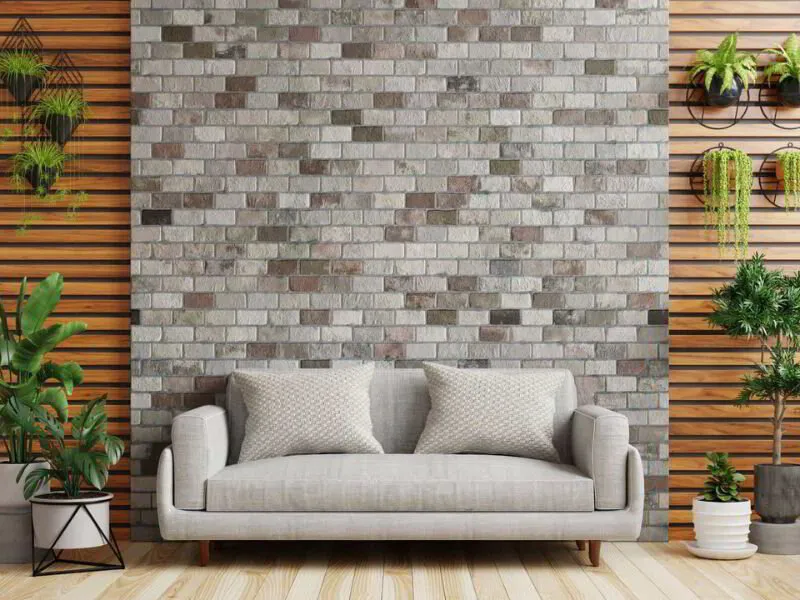If you’re thinking about updating your space, you’ve probably looked at paint, traditional wallpaper, or maybe even wall panels. But there’s one option that’s been gaining serious traction—and for good reason. Wallpaper with natural texture and fibers isn’t just a trend. It’s a shift toward design that feels good, looks stunning, and does more than just cover a wall. Designers are especially drawn to natural texture wallpaper for the way it adds depth and warmth to modern interiors.
In recent years, natural fiber wallpaper has become a favorite among designers and homeowners alike. It brings depth and dimension that flat surfaces just can’t match.
What Makes Natural Fiber Wallpaper Different?
Natural fiber wallpapers use real materials. They include grasscloth, jute, hemp, bamboo, and raffia. These fibers are handwoven or machine-woven onto a paper backing, creating a surface that’s rich in both texture and visual interest.
Traditional wallpapers usually use printed patterns or synthetic finishes. Natural ones don’t need that. The material itself becomes the design. Every roll is slightly different. That’s part of the charm. It brings a raw, organic feel to your room. It makes the space feel more personal and alive.
A Unique Look and Feel
What really sets natural wallpapers apart is their tactile quality. You can see and feel the texture. A room with grasscloth or raffia wallpaper instantly feels more grounded. It adds an earthy, warm atmosphere that’s hard to replicate with synthetic finishes.
For example, the sage mist natural raffia rough wallpaper brings a soft green tone mixed with the rawness of raffia fibers. It’s subtle, calming, and perfect for a bedroom or study where you want to relax and unwind.
Where to Use It
Wallpaper with natural texture isn’t just for accent walls. But it works really well for them too. It works in almost any space where you want to bring a bit of nature indoors.
Best Rooms for Natural Texture Wallpaper:
-
Living rooms – Add texture behind a couch or fireplace to create a cozy focal point.
-
Dining areas – Elevate the space without overwhelming it.
-
Bedrooms – Use it behind the headboard for a soft, inviting backdrop.
-
Home offices – It brings calm and focus, especially in muted earth tones.
Still, these wallpapers aren’t the best choice for bathrooms or kitchens. High humidity in those spaces can damage natural fibers.
Pros and Cons You Should Know
Like any material, natural wallpaper has its benefits and limitations. Here’s a quick breakdown:
Pros:
-
Made from renewable, eco-friendly materials
-
Rich texture and visual interest
-
Naturally sound-absorbing
-
Adds value and uniqueness to interiors
-
Easy to pair with minimalist or rustic décor
Cons:
-
Typically more expensive than standard wallpaper
-
Not washable or moisture-resistant
-
Needs professional installation for best results
-
Slight color and texture variation (which some see as a pro)
Design Tips: How to Make It Work
If you’re new to working with textured walls, start small. Use it on one wall or in a small space like a powder room or hallway. Balance it with simple furniture and light fixtures. Since natural fibers are visually rich, you don’t want to overcrowd the space.
Lighting plays a big role too. Soft, diffused light brings out the shadows and depth of the fibers. During the day, natural light enhances the organic beauty. At night, warm lighting makes it even cozier.
Style Matches and Themes
Natural fiber wallpaper fits beautifully in:
-
Scandinavian interiors – Clean lines, neutral tones, and lots of texture.
-
Coastal designs – Think raffia and jute with soft blues and sandy whites.
-
Modern boho – Layered rugs, plants, rattan furniture, and a grasscloth wall.
-
Japandi – A hybrid of Japanese minimalism and Scandinavian functionality.
You might be designing a calm retreat. Or maybe a fun family space. This wallpaper fits both. It brings everything together without looking too bold or busy.
A Sustainable Choice That Lasts
One of the most underrated aspects of natural wallpaper is sustainability. Many options are biodegradable, low in VOCs, and made using renewable resources. If you care about what goes into your home—and the planet—this is a win-win.
Also, because it’s durable and doesn’t go out of style, it holds up over time both physically and visually. Trends change fast, but the calming, textural appeal of natural surfaces tends to stick around.

